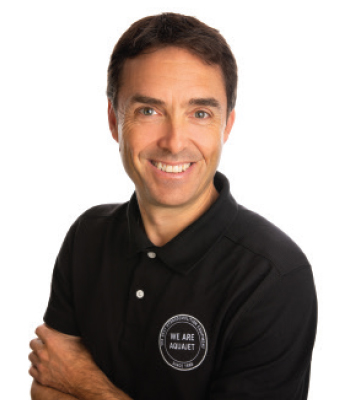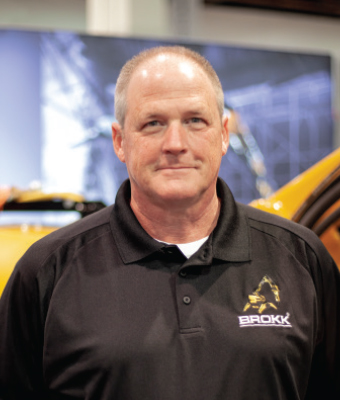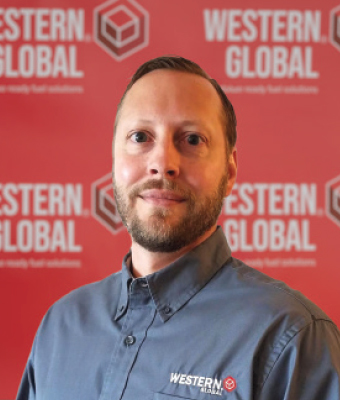
North American Sales Manager
As the globe begins to move past the health care crises of the COVID-19 pandemic, the aftershock effects are long-lasting and far reaching. Supply chain issues leave manufacturers struggling to get parts and other needed components, and some customers face enormous lead times as they scramble to acquire equipment to finish end of year projects before winter sets in.
Aquajet, like other manufacturers, faced supply issues in 2021. However, proper planning and a tight tracking of inventory helped us maintain the products we needed to fulfill almost all customer orders. As we roll into 2022, we’re adjusting our approach to stocking to be ready to assist our customers, but they too must be thinking ahead and ordering equipment well in advance of the projects. According to the American Road & Transportation Builders Association, $348 billion of the Infrastructure Investment & Jobs Act is going toward highways and bridges, which means the competition for quality equipment solutions will be high. We’re recommending that customers place orders for spring by December 2021.

VicePresident of Sales & Marketing
In 2021, we saw technology evolve with more manufacturers introducing electric and battery-powered equipment to reduce emissions and improve sustainability. This could be a pivotal point for the industry with pressure increasing for more focus on the environment and safety while still maximizing efficiency. While others have been trying to get on the electric bandwagon to meet increasing pressures, Brokk has been in that arena for 45 years and understands both the technology and how to maximize power and performance in electric machines. With the industry trending toward automation, Brokk technology continues to adapt to be ready for the next steps.
A Brokk robot provides a solution with the ability to be controlled with just one operator. Utilizing this technology allows contractors to get more done with small a crew and delegate more tasks without having to use the entire team in one area. As technology evolves, continuing to mechanize certain tasks and finding ways to work smarter will help contractors maximize safety, productivity, and ROI.

Sales Manager
As the demand for concrete and concrete applications grows, supply chains struggle to deliver and labor shortages exist in every sector of the economy. The realities of the post-pandemic economy demand solutions that maximize efficiency and productivity while navigating the ever-changing status of equipment and parts backlogs. And, with inflation at a 30-year all-time high, contractors are searching for the smartest equipment investment. Concrete contractors in particular struggle with logistical limitations including limits on yardage and weeks-long lead times for concrete delivery. And, labor shortages leave crews with fewer workers who also struggle with a lack of experience and application knowledge.
Roller screeds and walk-behind curbing machines are easy to learn and capable of producing consistent, high-quality results, even with less experienced crews. Our signature Curb Roller reduces labor needs by up to 75% when completing curb and gutter work. For flatwork, roller screeds offer an efficient solution that can create quality results with less dependence on the operator’s skill level.

Director of Product Management,
North America
As a leading manufacturer of construction products, we have a responsibility to make this process more sustainable.
At GCP, we are currently driving sustainability in two key segments: specialty building materials and specialty construction chemicals.
One example of this is the development of our CLARENA® RC admixture, which has the potential to keep millions of cubic yards of concrete out of landfills. We have developed and continue to develop Environmental Product Declarations (EPD) programs and transparency certifications that are aligned with industry standards that further sustainable construction practices.
Our specialty construction chemicals segment includes our VERIFI® in-transit concrete management system which optimizes mix design and reduces water and fuel consumption.
These are just a few examples of how GCP is fostering more environmentally conscious construction.
gcpat.com/en/about/sustainability

President
Jeffrey Machine experienced continued growth and success in 2021. We finished construction on a bran-new inventory warehouse at our headquarters in Birmingham, Alabama. Completed in August, the new warehouse adds 14,000 square feet to our property and houses stock tools and parts ready to ship to our customers. This warehouse is particularly beneficial to us due to the launch of our new jeffreymachine.com e-commerce site on which customers can now access our full catalog and place orders for Jeffrey Machine products.
A return to travel meant a return to trade shows, and we were excited to attend IFCEE in May in Dallas, Texas. We also attended the Utility Expo in September in Louisville, Kentucky. Trade shows are one of our favorite ways to meet new customers, reconnect with industry friends, and feature new Jeffrey Machine products. This year saw the debut of our new JeffCut .990 Machined Round Dragon Holder, designed to be tougher and show less wear over time compared to other standard holders. Next year also marks our 45th year in business and we plan to celebrate that milestone all year long.

President
At the beginning of 2021, JLG predicted a slow and steady increase in demand for MEWPs and telehandlers during the second half of the year. That increase came earlier and faster than anticipated. Pent up demand, combined with supply chain constraints and a skilled labor shortage, are the strongest headwinds we faced.
However, the year was also marked with significant product advancements. JLG introduced two transformational innovations.
In January, we launched the industry’s first all-electric scissor lift, the AE1932 DaVinci®. This 19-ft, best-in-class platform capacity lift features zero hydraulics and is powered by a single, 10-year rated Lithium-ion battery. These two features alone effectively eliminate leaks and the need to replace batteries.
The second innovation is our game changing 670SJ self-leveling boom lift. This best-in-class, 67-ft platform height lift self-levels when traversing uneven terrain up to 10-degrees at full height.
JLG will its mission to provide people with a safer, more productive way to work at height.

General Manager
Making predictions is generally a fool’s game, but there is one thing we all know for certain: 2022 will continue to see the (over)use of the words “unprecedented,” “supply chain issues,” and “labor shortages.” Mecalac is not alone in facing the challenges of navigating through dangerously bi-polar market conditions. Still, despite everything, 2022 is likely to be the most successful in the company’s history, though getting there will be a test of skill, creativity, and resolve.
Ironically, the ongoing market disruptions have offered up real opportunities to companies, like ours, that are gaining a foothold in North America after decades of success in Europe and elsewhere. The supply shortfalls affecting many equipment dealers have led them to seek alternative vendors, and we are happy to step into the void with our unique offering of compact, innovative construction equipment.
We are likely to see another overused expression in 2022: “inflationary pressures.” Doing business in 2022 won’t be for the faint of heart.

Vice President of Sales & Marketing
The 2021 market was tough. Not only for manufacturers but for end-users in the transportation and heavy-haul industries. Like many businesses in the trailer market, Talbert Manufacturing experienced a drastic increase in product demand. Unfortunately, this pushed businesses to their limits in order to meet customer needs, while also facing the significant pandemic-related challenges along the way—from limited product availability and increased production cost to far-reaching labor shortages.
Although this year has brought more than its fair share of roadblocks, we’ve come out smarter and more efficient than ever before. It has given us the opportunity to better understand the strengths of our team to pool our resources and streamline processes to best support our customers. We could not have finished this year without our dedicated teams at Talbert and long-standing partners from our suppliers, dealers, and end-users who have worked tirelessly to assist and work around our industry-wide and beyond issues.

Director of Regional Sales
In 2021, fuel costs soared, with the price of diesel steadily increasing more than 50% according to the U.S. Energy Information Administration. The rising costs have caused contractors to look for methods and tools to better manage fuel efficiency and control fuel costs. One option that many have turned to for controlling costs is maintaining their own onsite fuel storage.
Onsite fuel storage enables contractors to experience the security and freedom of controlling their own fuel supply along with the opportunity to purchase at a bulk rate. The TransCube Global from Western Global puts fuel control in the hands of the contractor with easily moveable tanks that can be transported around the jobsite or from job to job while completely full of fuel. With a range of size, the TransCube can offer fuel storage for whatever size fits your site needs. The tanks can be transported in the back of a truck, on a trailer, or with a forklift or crane. With inflation at a 30-year high, there appears to be no immediate end in sight to the rising costs. On-site fuel storage offers a strategy that helps maintain efficiency and profitability.

President
Our organization has gone through significant changes recently. Yanmar Compact Equipment North America launched in 2020 following Yanmar’s acquisition of ASV in 2019. The new organization is supported by two distinct brands—ASV and Yanmar Compact Equipment—dealer channels and product lines to offer a more complete compact equipment package.
Currently, the biggest challenge we face is the combination of the most rapid economic growth period since the mid-1960’s and component supply and logistics constraints. While machines are sitting in port for months and logistics costs are as much as 6x what they were 12 months ago, we believe that the pent-up demand from 2021 will carry into 2022, but we’re cautious about predictions beyond that.
Supply chain disruptions have impacted the entire compact construction equipment market by constraining the rate at which the industry can manufacture and deliver machines.
However, we continue to be optimistic in the growth we have planned.
Modern Contractor Solutions, December 2021
Did you enjoy this article?
Subscribe to the FREE Digital Edition of Modern Contractor Solutions magazine.



